No products in the cart.
10 Female Abstract Artists You Should Know and Their Iconic Works
I. Introduction
Throughout history, female abstract artists have played a crucial role in shaping modern art. Yet, despite their contributions, they have often been overshadowed by their male counterparts, including Willem de Kooning, Jackson Pollock, and Mark Rothko. The perception of abstract expressionism as a movement dominated by men has gradually shifted, thanks to the recognition of great women artists who have challenged conventions and expanded the boundaries of fine art.
The impact of female abstract painters extends far beyond their canvases. Their art practice has been defined by innovation, emotion, and a willingness to experiment with different materials and techniques. Whether through large-scale works, mixed media installations, or expressive brushstrokes, these women artists have carved a place in visual history, influencing generations to come.
From the expressive colour fields of Alma Thomas to the layered compositions of Julie Mehretu, female abstract artists have helped redefine abstraction. Their contributions span decades, with figures like Joan Mitchell and Lee Krasner leading the charge during the height of abstract expressionism, while contemporary artists continue to push the boundaries of the genre.
Institutions such as the Whitney Museum have played a key role in recognising these pioneering artists. Exhibitions such as Women of Abstract Expressionism highlight their invaluable contributions and showcase works that were once overlooked in mainstream narratives. The Whitney Museum continues to celebrate women artists through solo shows and major retrospectives, ensuring their place in the evolving history of modern art. You can explore their collection and learn more about the movement by visiting the Whitney Museum’s Exhibit on Women of Abstract Expressionism.
II. Pioneers of Female Abstract Expressionism

Lee Krasner – The Power Behind Abstract Expressionism
Lee Krasner was a driving force in the abstract expressionist movement, yet for many years, her work was overshadowed by that of her husband, Jackson Pollock. A student of Hans Hofmann, she developed a deep understanding of abstraction and composition, making significant contributions to the avant-garde art scene. Her approach to painting was bold and intuitive, often incorporating large sweeping gestures and a distinctive sense of rhythm.
Krasner’s commitment to abstract painting led her to develop a style that constantly evolved, influenced by both Cubism and modernist techniques. Unlike many of her contemporaries, she frequently reworked and repurposed older pieces, demonstrating a dynamic and ever-changing relationship with her art. Her use of colour, form, and movement helped redefine abstract painting, ensuring her legacy as one of the great women artists of the twentieth century.
Some of her most iconic works include The Seasons (1957), a vibrant large-scale painting created following Pollock’s death, and Gaea (1966), which showcases her deep connection to nature and organic forms. These paintings, with their expressive brushstrokes and intense colour palettes, highlight her skill as a painter in her own right.
In recent years, major retrospectives have celebrated Krasner’s contributions to abstract expressionism, solidifying her place in art history. The Whitney Museum has played a key role in re-evaluating her work, ensuring that her impact on modern art is recognised. You can explore more of her works in their collection by visiting the Lee Krasner section at the Whitney Museum.
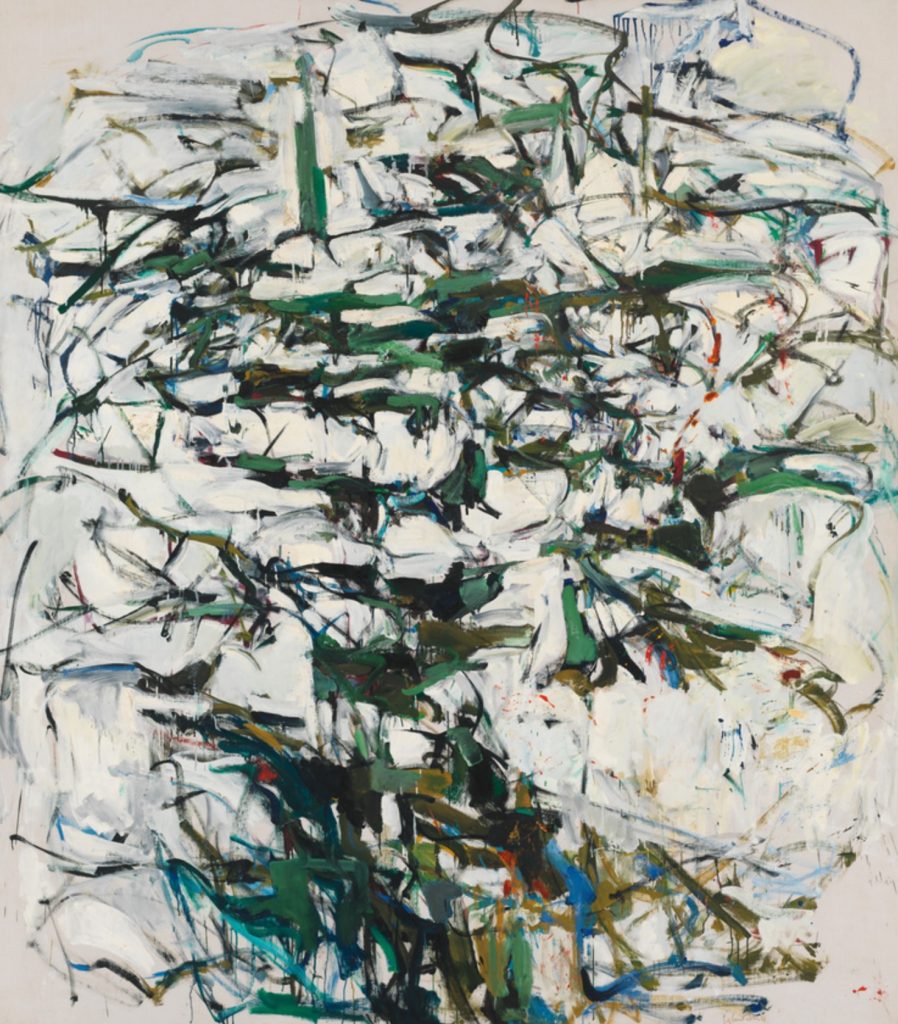
Joan Mitchell – Expressive, Bold, and Uncompromising
Joan Mitchell was a trailblazer in abstract expressionism, known for her fearless use of colour and emotionally charged compositions. Unlike many of her male counterparts, Mitchell was not only acknowledged within the movement but also enjoyed critical and commercial success during her lifetime. Her work, characterised by energetic brushstrokes and a deep sensitivity to landscape and emotion, is considered among the most expressive of the era.
Mitchell’s approach to abstraction was deeply personal, often drawing inspiration from nature and her surroundings. She was influenced by poetry, music, and memories of specific places, which she transformed into vivid, painterly landscapes on canvas. Her use of thick, impasto layers of paint created a raw, immersive effect, making her work highly distinctive.
Some of her most famous paintings include Hemlock (1956), a powerful piece reflecting her fascination with both movement and structure, and the Grande Vallée series, completed in the 1980s, which remains one of her most celebrated bodies of work. These paintings showcase her ability to balance control and spontaneity, allowing for a dynamic interplay between colour and space.
As one of the most influential female abstract painters, Mitchell’s legacy continues to inspire artists today. The Joan Mitchell Foundation preserves her artistic achievements and promotes the work of emerging artists in her name. To explore more of her works, visit the Joan Mitchell Foundation’s official website.
III. Female Abstract Artists Who Redefined Modern Art
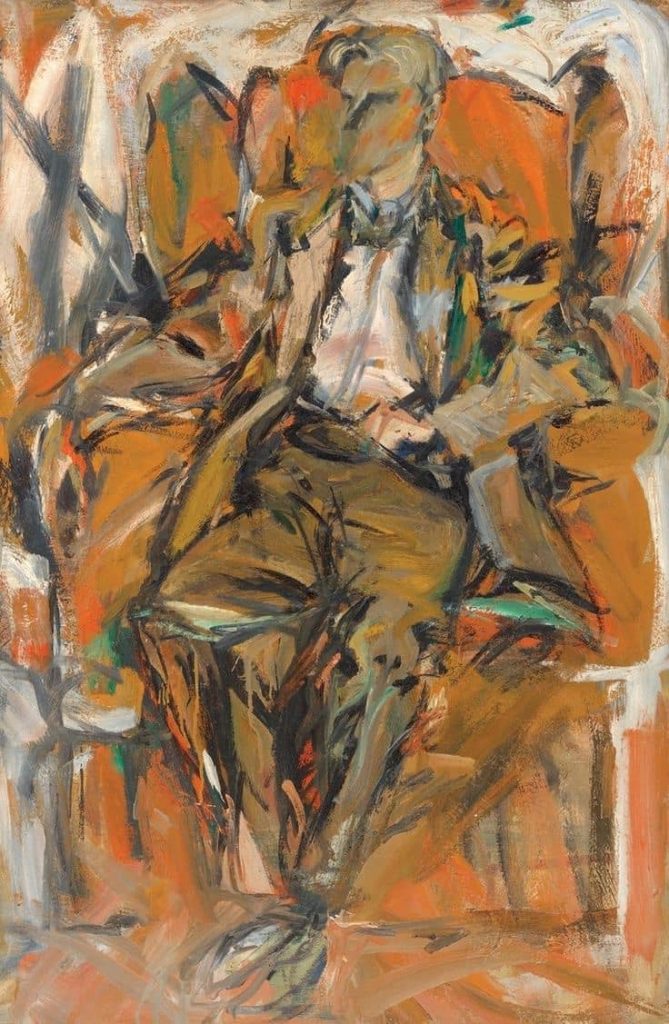
Elaine de Kooning – Blending Abstraction and Portraiture
Elaine de Kooning was a key figure in abstract expressionism, recognised for her ability to fuse dynamic abstraction with figurative elements. While many of her contemporaries were devoted to pure abstraction, she remained committed to both approaches, seamlessly blending movement, energy, and representation in her work. Her art practice was influenced by the gestural style of the abstract expressionists, yet she brought a distinct fluidity and immediacy to her paintings that set her apart.
Throughout her career, de Kooning explored a wide range of subjects, from bullfighting arenas to political figures. Her Bullfight series captures the movement and intensity of the spectacle with bold, expressive strokes, demonstrating her ability to translate physical energy onto the canvas. One of her most well-known works is her Portrait of John F. Kennedy, painted in 1963 after being commissioned to create an official portrait of the president. Unlike traditional portraiture, her depiction of Kennedy was filled with loose, rapid brushwork, evoking the charisma and dynamism of her subject.
Unlike her husband, Willem de Kooning, who was fully committed to abstraction, Elaine embraced both figurative and abstract art. Her work has been widely exhibited, and her influence on modern art has become increasingly recognised in recent years. The National Portrait Gallery houses several of her works, providing an in-depth look at her unique contributions to the art world. You can explore her paintings in their collection by visiting the Elaine de Kooning section at the National Portrait Gallery.
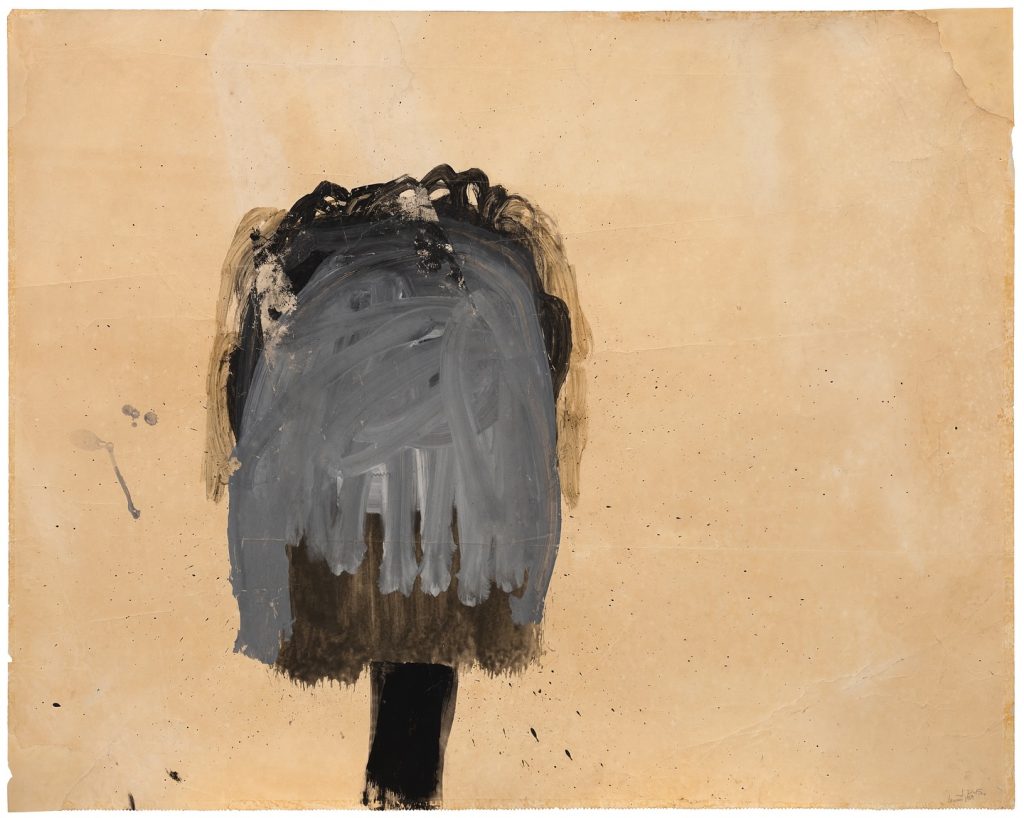
Jay DeFeo – A Master of Mixed Media and Large-Scale Works
Jay DeFeo was an artist who defied categorisation, merging painting, sculpture, and mixed media in ways that pushed the boundaries of fine art. Best known for her monumental work The Rose (1958–66), she demonstrated an obsessive dedication to her craft, spending eight years layering paint and sculpting the surface of the canvas to create a deeply textured, almost sculptural piece. Weighing nearly a ton, The Rose became an iconic work of American art, symbolising both endurance and transformation.
DeFeo was a key figure in the San Francisco art scene, working alongside beat poets and avant-garde creatives. Her work was influenced by both abstract expressionism and a deeply personal, almost spiritual approach to materiality. Beyond The Rose, she created an impressive body of work that incorporated photography, collage, and drawing, exploring abstraction through a variety of forms.
As a female abstract artist working in a time when the art world was still dominated by men, DeFeo’s contributions were often overlooked. However, her legacy has grown in prominence, with major institutions now recognising her impact on contemporary mixed media art. The Getty Museum holds a comprehensive archive of her work, showcasing her innovative approach to abstraction and material experimentation. To explore her archives, visit the Jay DeFeo collection at The Getty Museum.
IV. Contemporary Female Abstract Artists

Julie Mehretu, ‘Hineni I (E. 3:4),’ 2019-2020, Ink And Acrylic On Canvas, © Julie Mehretu
Julie Mehretu – Mapping History Through Abstraction
Julie Mehretu is an American painter known for her large-scale abstract canvases that weave together elements of architecture, geography, and history. Her work is layered with meaning, using intricate mark-making techniques to explore themes of migration, conflict, and global transformation. By combining abstraction with urban planning and cartography, she creates dynamic visual landscapes that reflect the complexities of the modern world.
Mehretu’s paintings often include multiple perspectives, overlapping grids, and gestural marks that give the illusion of movement. Her approach is deeply influenced by social and political events, making her work not only visually striking but also conceptually rich. She frequently incorporates references to historical sites, war zones, and evolving cityscapes, creating a unique fusion of fine art and socio-political commentary.
Some of her most recognised works include Mural (2009), a monumental commission for the Goldman Sachs headquarters, and HOWL, eon (I, II) (2016), which explores themes of unrest and displacement. Her paintings challenge conventional ideas of abstraction, blending spontaneity with meticulously structured layers of meaning.
Mehretu is widely regarded as one of today’s most influential female abstract artists. Her works are held in major international collections, and she continues to push the boundaries of abstraction. You can explore more of her work at the Museum of Modern Art (MoMA).

Alma Thomas – The Pioneer of Colour Field Painting
Alma Thomas was a pioneering African American artist whose vibrant, abstract paintings helped redefine the possibilities of colour and composition. As the first African American woman to have a solo show at the Whitney Museum, she broke significant barriers in the art world. Her work is best known for its mosaic-like brushstrokes and radiant use of colour, drawing inspiration from nature, music, and the rhythms of life.
Unlike many of her contemporaries, Thomas did not start her professional career as an artist until later in life. After decades of teaching art in Washington, D.C., she fully dedicated herself to painting in the 1960s. Her late start did not hinder her impact—she quickly became known for her signature style, which involved layering dabs of paint in a way that resembled stained glass or a shimmering textile.
Among her most iconic works are Resurrection (1966), which was later displayed in the White House, and Wind and Crepe Myrtle Concerto (1973), a celebration of movement and harmony in nature. Thomas’s work embodies a sense of joy and optimism, making her a key figure in both the abstract and colour field movements.
Her influence continues to resonate with artists today, particularly in cities like Los Angeles and New York, where contemporary painters draw inspiration from her approach to abstraction and colour theory. The Smithsonian American Art Museum houses an extensive collection of her works, providing a deeper look into her artistic journey. You can explore more of her work at the Smithsonian American Art Museum.
V. Trailblazers in Female Abstract Art

Helen Frankenthaler – The Innovator of Colour Stain Techniques
Helen Frankenthaler was a visionary artist whose pioneering soak-stain technique transformed abstract painting and influenced movements like Pop Art and Colour Field painting. Unlike traditional methods, she allowed thinned paint to seep directly into unprimed canvas, creating fluid, luminous compositions that blurred the line between form and background. Her technique gave a sense of spontaneity and depth, making her work stand out among her abstract expressionist peers.
Frankenthaler’s approach to painting was inspired by nature and landscape, yet her work remained entirely abstract. She developed her distinctive technique in the early 1950s, and it quickly became a defining method in modern art. Her ability to manipulate colour and texture without rigid structure or heavy brushwork made her paintings feel weightless and organic.
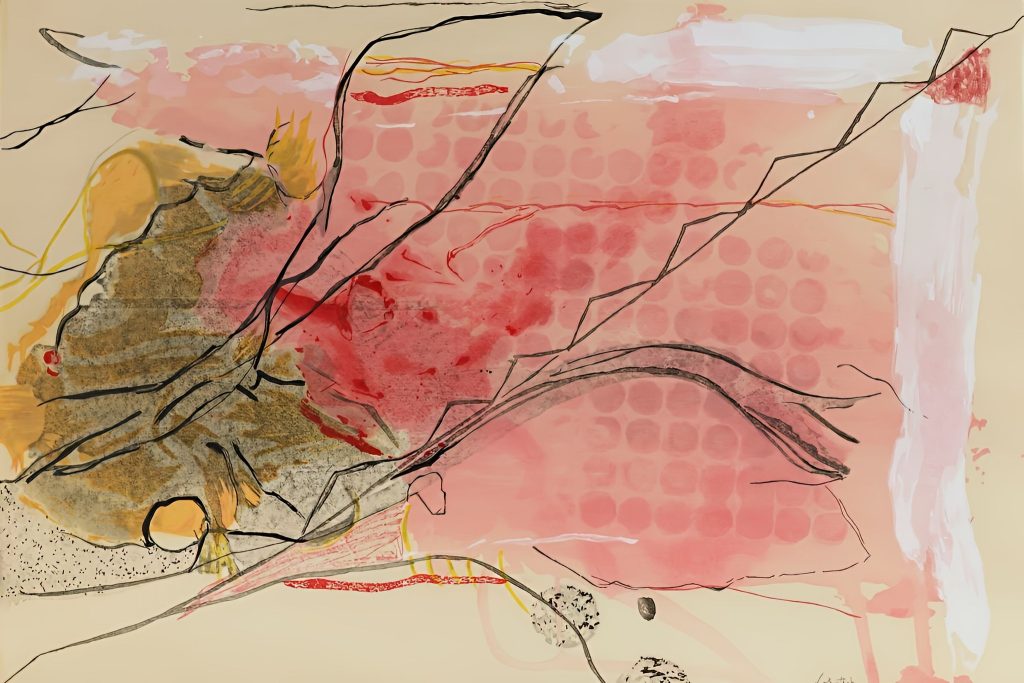
One of her most significant works, Mountains and Sea (1952), showcases her mastery of fluid colour and open space. This piece was particularly influential for later artists, including Morris Louis and Kenneth Noland, who adopted her soak-stain method in their own work.
As a major force in modern art, Frankenthaler’s contributions continue to be celebrated, with her work exhibited in leading museums worldwide. The Helen Frankenthaler Foundation preserves her artistic legacy, supporting research and exhibitions that highlight her impact on abstraction. You can explore more about her work at the Helen Frankenthaler Foundation.
Lynda Benglis – Abstract Art Beyond the Canvas
Lynda Benglis is an artist known for pushing the boundaries of fine art, challenging traditional notions of painting and sculpture. Her unconventional use of materials, including poured latex, foam, and metal, redefined abstraction and introduced a more physical, sculptural quality to modern art.
Unlike many of her contemporaries who worked with flat canvases, Benglis experimented with fluid materials, allowing them to shape themselves in a way that reflected movement and energy. Her early poured latex pieces, such as Fallen Painting (1968), demonstrated her radical approach—creating work that hovered between painting and sculpture, blurring distinctions between the two.
Benglis’s boldness extended beyond her materials. She was an outspoken critic of the male-dominated art world and often used her work to challenge traditional ideas of gender and power in the arts. Her provocative self-promotion in the 1970s, including controversial advertisements in art magazines, cemented her reputation as a fearless artist unwilling to conform to expectations.
Her influence can be seen in the works of contemporary abstract artists who continue to explore non-traditional materials and methods. The Met Museum has held retrospectives celebrating her career, showcasing her impact on modern abstraction. To explore more about her work and career, visit the Met Museum’s Lynda Benglis Retrospective.
VI. Pushing the Boundaries of Abstraction
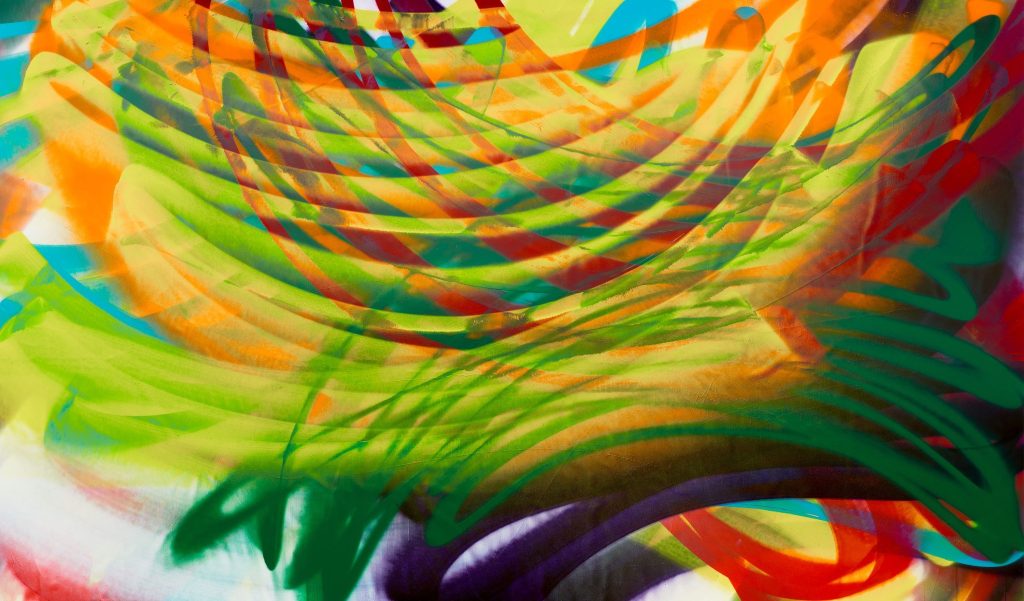
Katharina Grosse – Large-Scale Abstract Installations
Katharina Grosse is renowned for her boundary-pushing approach to abstraction, transforming entire buildings, landscapes, and interiors into immersive painted environments. Unlike traditional painters who confine their work to the canvas, she uses spray paint on unconventional surfaces, including walls, floors, and even draped fabric, blurring the distinction between painting and sculpture.
Grosse’s artistic practice is rooted in movement and spontaneity, with her large-scale works embracing chance and unpredictability. Her bold use of colour creates dynamic compositions that challenge perceptions of space, often overwhelming the viewer with vibrant, all-encompassing forms. She has described her work as a way of breaking down barriers—both physically and conceptually—by allowing paint to expand beyond conventional limits.
Her most recognised works include Untitled (2015), where she sprayed an entire gallery space, transforming its architecture into a living painting, and The Horse Trotted Another Couple of Metres, Then It Stopped (2018), a striking outdoor installation that covered soil, trees, and a deconstructed building with waves of intense colour. These pieces exemplify her ability to transform everyday environments into surreal, dreamlike spaces.
As a leading figure in experimental abstraction, Grosse continues to challenge how audiences engage with contemporary art. Her work has been exhibited worldwide, and she remains one of the most innovative voices in large-scale painting today. You can explore more of her work at the Gagosian Gallery.
Cecily Brown – Blurring the Line Between Abstract and Figurative

Cecily Brown is a contemporary painter whose work sits at the intersection of abstraction and figuration. Inspired by both the expressive gestures of abstract expressionism and the rich storytelling traditions of figurative painting, she creates layered, energetic compositions where hints of recognisable figures emerge from abstracted forms.
Brown’s art practice is deeply influenced by past masters, including Rubens, Francis Bacon, and Willem de Kooning. She plays with ambiguity, using rapid, gestural brushwork to suggest movement and depth while deliberately avoiding fixed narratives. Her paintings often contain elements of sensuality and chaos, inviting the viewer to interpret shifting forms within the swirling layers of colour.
One of her most well-known works, The Girl Who Had Everything (1998), showcases her signature style, combining classical themes with expressive, fragmented abstraction. Her paintings demand close engagement, as figures seem to materialise and dissolve within her dynamic compositions.
Brown is widely regarded as one of the most important contemporary abstract painters, with her work featured in major museum collections worldwide. She continues to challenge the boundaries between abstraction and storytelling, cementing her place in the evolution of modern painting. You can see more of her work at the Whitney Museum.
Female abstract artists have played a crucial role in shaping modern art, yet for decades, their contributions were often overlooked in favour of their male counterparts. From the pioneers of abstract expressionism to contemporary visionaries redefining installation art, these women have continually pushed the boundaries of what abstraction can be. Their work spans diverse movements, from the emotionally charged brushstrokes of Joan Mitchell to the large-scale, immersive environments of Katharina Grosse.
Each of these artists has contributed to the evolution of abstract painting, proving that abstraction is not just about form and colour but also about storytelling, experimentation, and breaking convention. Their influence can be seen in major museum collections and contemporary art galleries worldwide, where their work continues to inspire new generations of artists.
If you want to experience these incredible artworks in person, explore exhibitions featuring female abstract painters at institutions such as the Whitney Museum, the Museum of Modern Art, and the Centre Pompidou. These museums and galleries are dedicated to celebrating the legacy and ongoing impact of women in abstraction. The Women in Abstraction Exhibit at the Centre Pompidou is a great starting point to dive deeper into the history and contributions of these pioneering artists.
Which of these female abstract painters inspires you the most? Share your thoughts in the comments—let’s keep the conversation going about the artists who have shaped the way we see and experience abstraction.

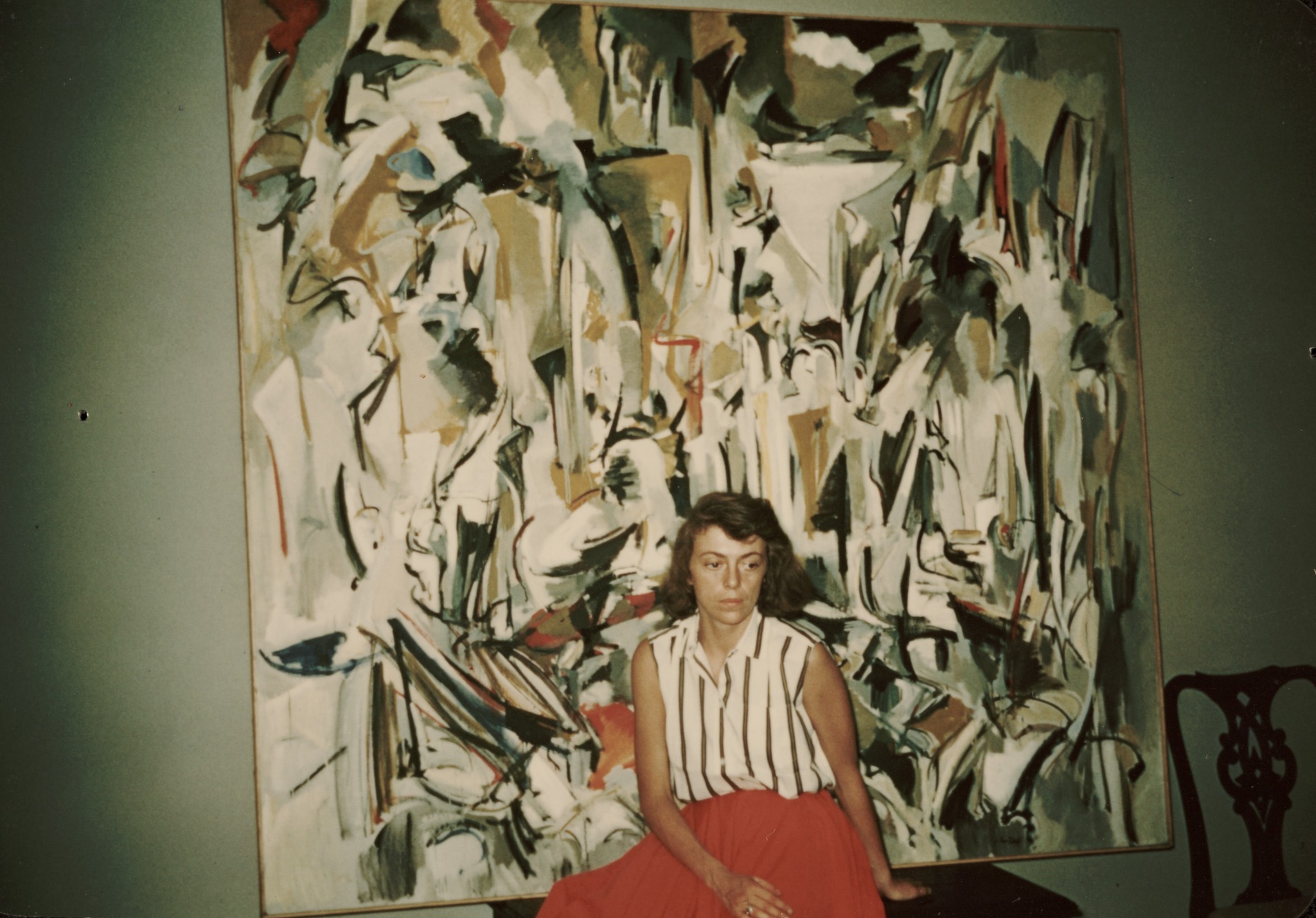
Leave a Reply